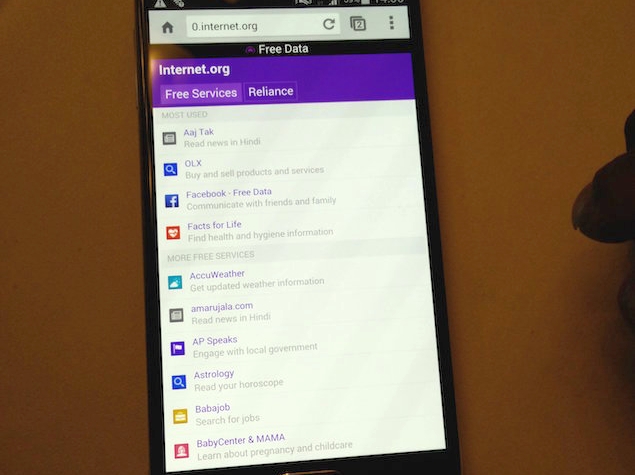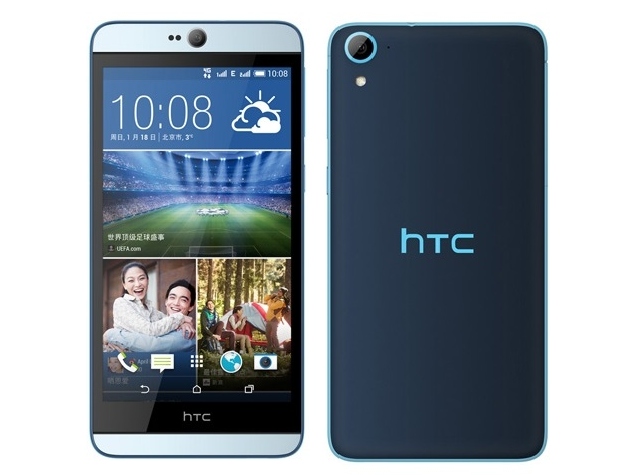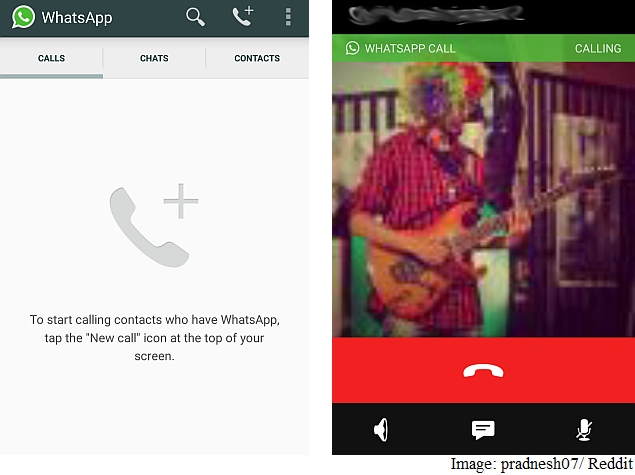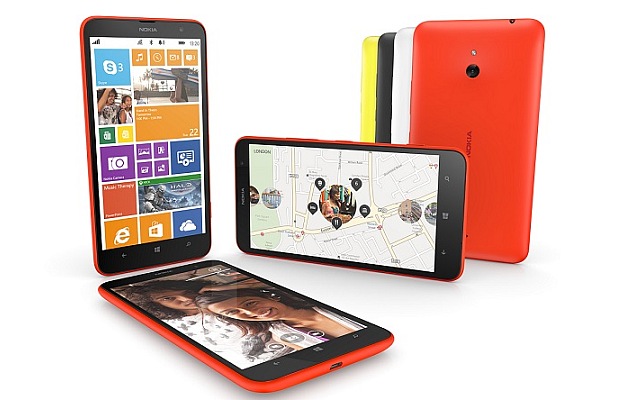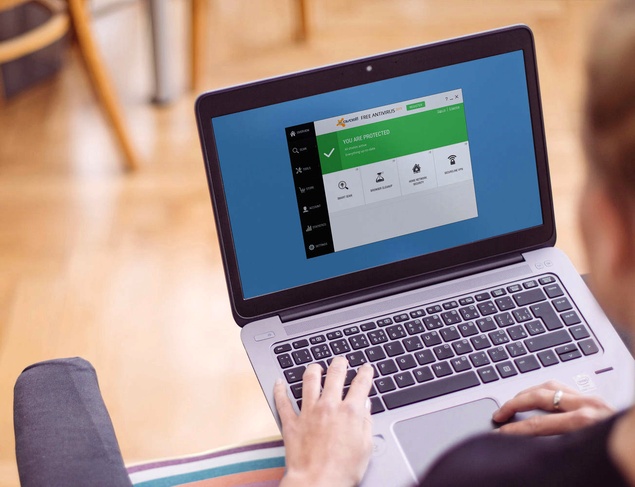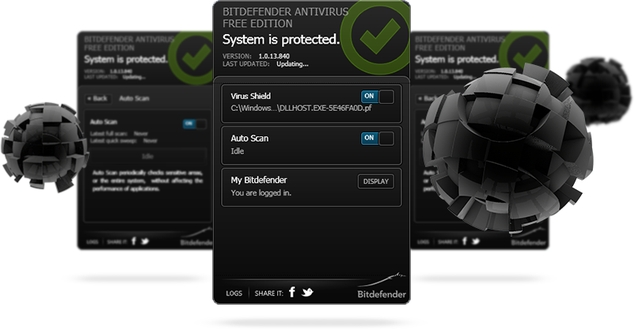Reliance Communications and Facebook announced on Tuesday
that the two are bringing free access to several websites for
Reliance's mobile users via Internet.org. During the event, Gurdeep
Singh, Chief Executive Officer, Consumer Business, Reliance
Communications said the goal is to deliver "zero bandwidth content" and
the speeds are dependent on the user's phone as well as the kind of
connection they have (2G or 3G). From Reliance's end, networks in the
launch circles have been strengthened and Internet.org ensures that the
destination site is as light on bandwidth as possible.
At the
event marking its announcement we got to check out how the service works
and it left as feeling there's a lot to be desired. Here's everything
you need to know about Internet.org in India.
Who is this for?
To
use Internet.org you have to have to be a Reliance Communications
customer in Mumbai, Maharashtra, Chennai, Gujarat, Tamil Nadu, Andhra
Pradesh, or Kerala. While all Reliance customers in these circles can
use it, the target audience is people without data plans - over 70
percent of mobile phone users in India, according to Singh. The idea is
that this population can either not afford Internet access or don't
realise what Internet can do for them, and hence don't have a data
connection. Internet.org can address both these concerns.
The company plans to roll out Internet.org to Reliance Communications users across the country in the next 90 days.
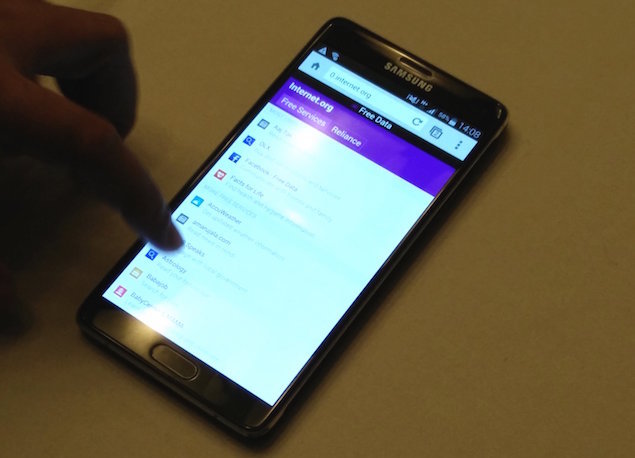
"It
acts as a great lever at the point of sale, it is far more consumer
friendly, network friendly, and it's a win-win for all," Singh said. Our
time using Internet.org wasn't very consumer friendly, but the free
access should still bring a lot of people on-board - to at least try out
the Internet for the first time.
How does it work?
Internet.org gives Reliance Communications customers free access to 40 sites,
which includes Wikipedia and WikiHow, various news sites, some
e-commerce sites, and of course, Facebook and Facebook Messenger. To
access these sites for free, Reliance users need to log onto
Internet.org from their phones using either Opera Mini or UC Browser for
Internet.org. While these browsers come preloaded on many low-end
smartphones, the kind Facebook and Reliance are targeting with
Internet.org, you have to wonder how those with the stock Android
browser are supposed to use the service. Reliance users can also call
1800-300-25353 (toll-free) and be greeted by a voice menu that will send
the URL of the service they wish to use to their phone via SMS.
If you're on an Android device, you can also access the 'whitelisted' sites via the
Internet.org app
- there's no app for iOS or Windows Phone yet. If you try to access a
site that isn't a partner with Internet.org, you're charged for the data
used. So, for example, a Bing search can be used to look up
information, but opening one of the search results will cost you money.
You are given a warning before leaving free access.
If you are not
a Reliance Communications customer in the above-mentioned circles,
visiting Internet.org just gives you an error message, and a nudge to
buy a SIM from Reliance.
Leaving free access
You
are taken to a page that explicitly asks you if you want to continue
browsing, warning you that you will incur charges on the data plan the
phone is under currently. And if it is not on a data plan, you can
purchases several packs listed on the page itself. Interestingly, while
Twitter is not a partner with Internet.org, we saw a 15 day Facebook
pack for Rs. 15, and a 1 day data pack for Rs. 9 which included 1GB of
2G data, and unlimited access to Twitter, Facebook, and WhatsApp.
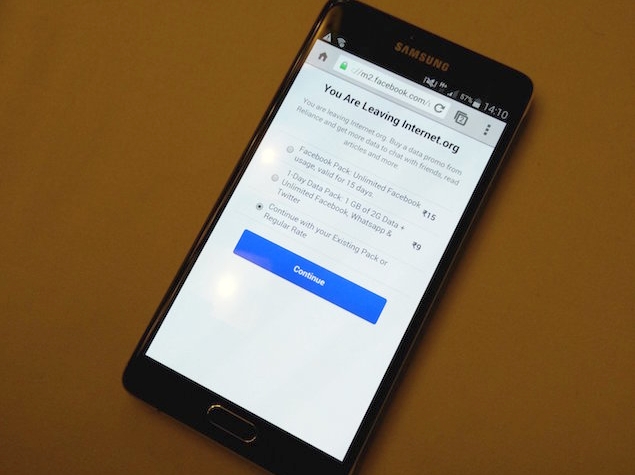 I'm
a Reliance Communications customer and I use Facebook and/or other
sites via Internet.org regularly, how do I know what I'm not being
charged?
I'm
a Reliance Communications customer and I use Facebook and/or other
sites via Internet.org regularly, how do I know what I'm not being
charged?
Unless you're using the Internet.org app, access
via browser is free only if you see a small message at the top of the
screen labelled as "Free Data". However, the full-fledged Facebook app,
is not free, and neither is the full Messenger app, with its support for
stickers and calls. The whittled down, spartan experience via
Internet.org is what you'll get for free.
First impressions
On
checking it out on a demo smartphone, we were greeted by an interface
that would be right at home in an era prior to phones being smart.
Internet.org sports a flat, unremarkable design with few colours and
sparse amounts of text.
It harkened back to the time of WAP
websites, an era when responsive design was just a dream. For what is
positioned as the gateway for over a billion potential new internet
users, it felt surprisingly barebones, and not exactly the best looking
means of trying to get first-time Internet users online. Nonetheless, it
was functional and did more than enough to let users know what to
expect from the host of sites are available for the magic price of free.

Getting
to these sites was another thing altogether. Tapping on a site took
fairly long amount of time before it opened, loading slowly at 2G
speeds. The sites themselves look much like their mobile equivalents,
exactly what you'd expect. Trying it out on a feature phone resulted in
some unexpected errors, which we were told had to do with the phone not
having the right font set required to display webpages.
On trying
to browse outside the cozy confines of the free sites, we were greeted
with a message prompting us to purchase a data pack or venture forth on
the existing plan the phone was equipped with.
A mixed bag of sites
As
for the sites that promise free data usage, news, health and social
welfare made up the biggest categories, so your need for news and
malaria prevention are taken care of. Most of the categories available
make a lot of sense, be it search (via Bing) or Sports (ESPN Cricinfo).
What's interesting though are the choices of some of the sites
themselves. For instance, there's no presence of e-commerce sites,
barring Olx and Cleartrip. There is no Flipkart, Amazon, or MakeMyTrip.
These may not be sites visited by the intended audience but how many
people using Internet.org will buy air tickets from Cleartrip?
Internet.org
has also apparently deemed that the next billion accessing the Web
don't need email, and can use Facebook Messenger instead. While Facebook
claims to be all for net neutrality, it's the selection of services on
display that make its claims questionable.
"I
think that the principles of net neutrality are around pro-access. And
the principles of Internet.org are pro-access as well," says Chris
Daniels, Vice-President of Internet.org at Facebook. "The thing that
we're trying to do is bring access to many more people through
Internet.org. So I see that the philosophies of this and net neutrality
are entirely aligned." Daniels does not agree when we say that there is a
conflict here, as Facebook is essentially restricting access by
offering only specific services for free.
"I
don't see the conflict there actually, the net neutrality discussion
today really focusses on the people who are already online," Daniels
says. "And what it needs is to also do is be inclusive of the people who
are not online. So bringing more people online we view as pro-access,
right in line with the principles of net neutrality as well."
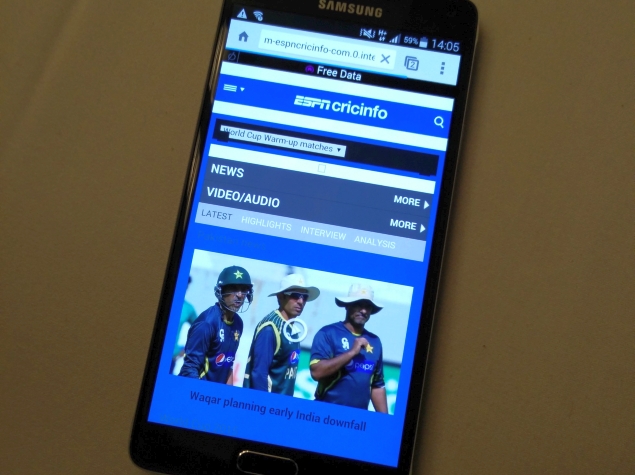
With
Internet.org rolling out today in seven circles, and both Reliance and
Facebook also keeping mum on key issues such as which parties are paying
for the bandwidth.
The privilege of power brokers
In
the past, Facebook has tied up with other operators such as Airtel to
bring Facebook for free via 0.facebook.com. Facebook has also tied up
with Airtel in regions of Africa, but for India, the company's placed
its bet on Reliance.
"When Mark [Zuckerberg] was here in October
we met with the team at Reliance," says Daniels, "and we found that we
shared the same vision, we shared the same passion, not about just
bringing people connectivity, but more importantly bringing the benefits
in people's lives that connectivity can deliver."
This move puts
Reliance in a very enviable position of a powerbroker for a host of
Internet-driven businesses and violates net neutrality and "pro-access"
that Facebook apparently believes in. Given that the people usually
gravitate towards anything free - even at expense of user experience and
functionality in most cases such as this - we doubt that many would
complain.
For Internet.org to truly become as transformative as
Facebook claims or wants, it needs to include a much wider selection of
sites, and include access to its competitors. For now, its goals are not
clear - for example, we asked Daniels what happens after a number of
people are on-board. Is the goal to transform them into paying Internet
users who access the open Web? He however stresses that the goal right
now is simply to bring people access to useful content, and that these
questions will be answered over time.
.




